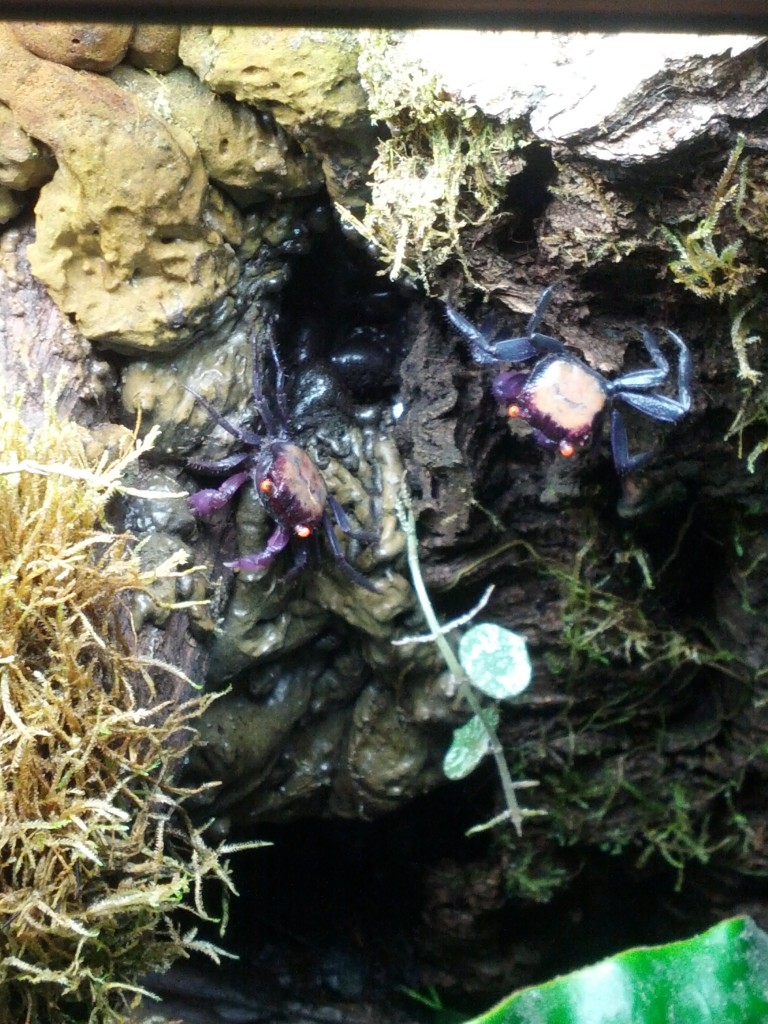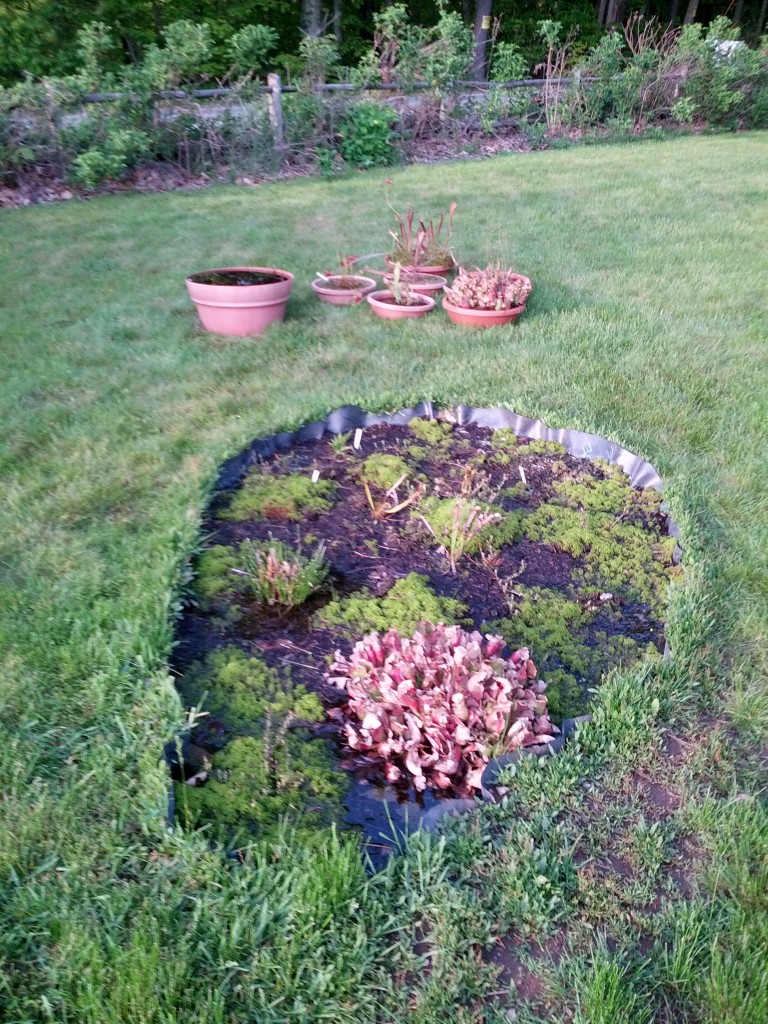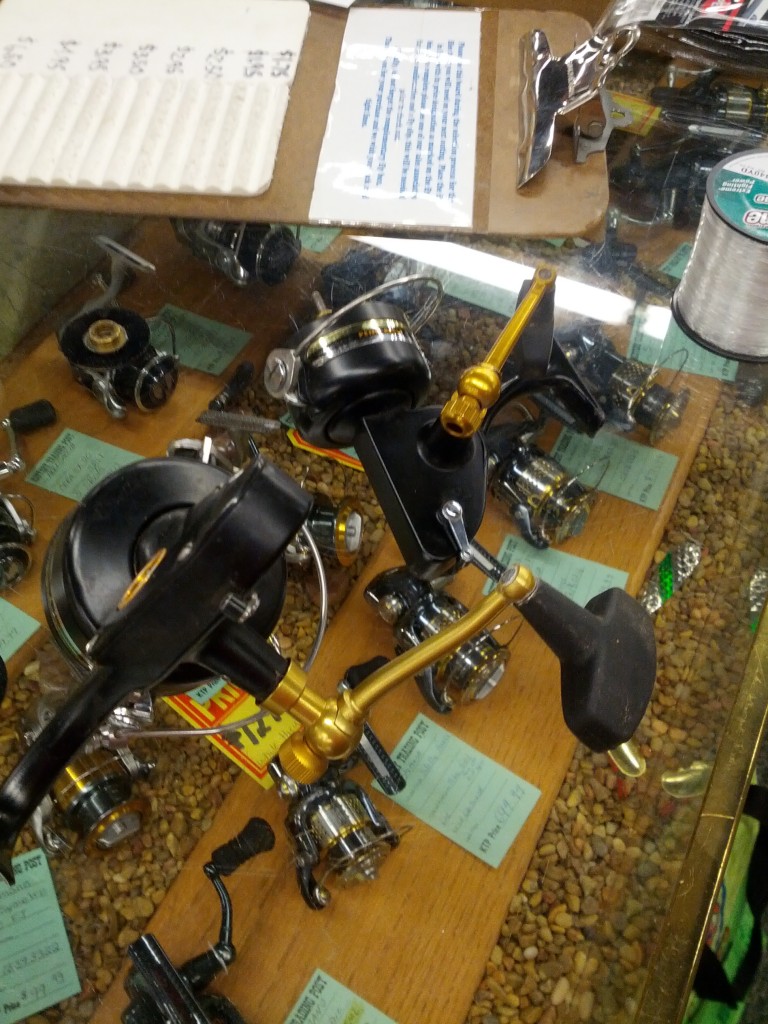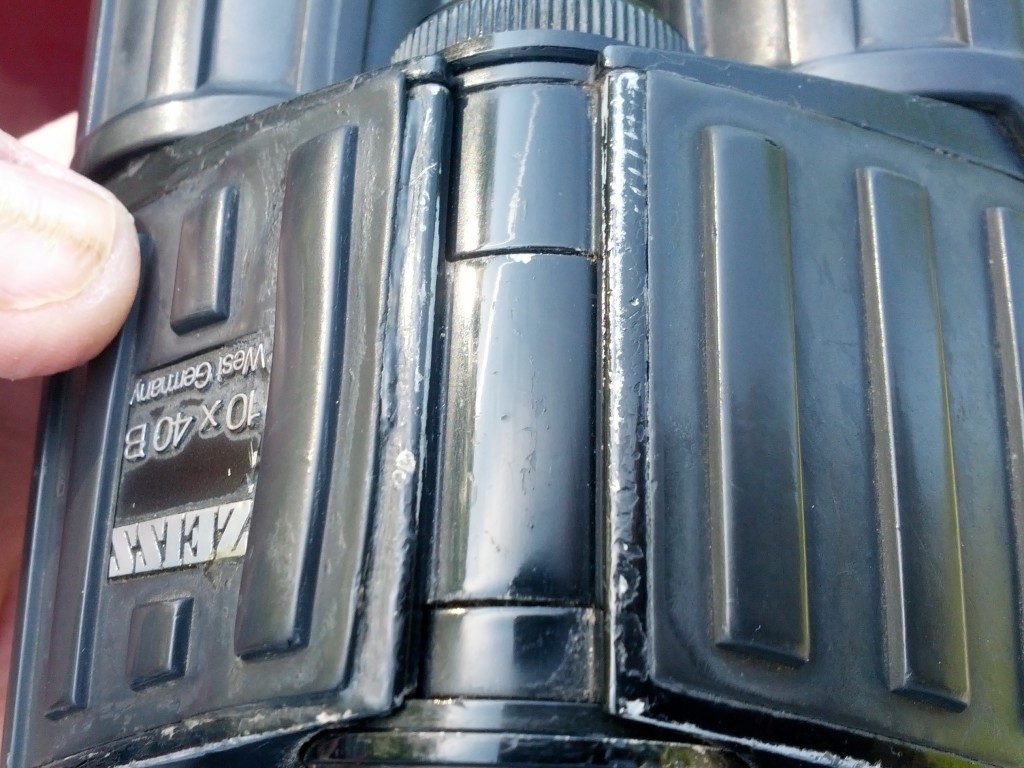I’ve known about our local kettle hole for many years, but for no good reason, have never visited it. I fixed that yesterday. It’s an amazing place; I know that there are kettles and potholes elsewhere that make ours look like a teacup, but think about the size of the ice chunk that made this landform. Impressive.
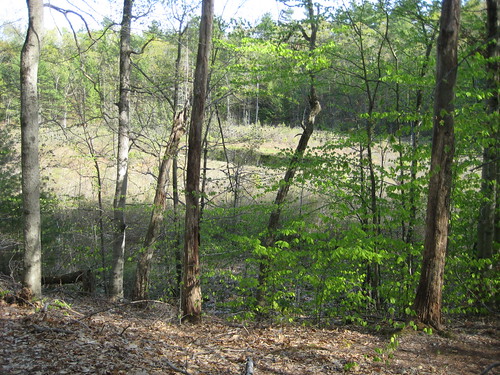
You first see the bog itself through the trees – lots of oak and some pitch pine as befits the very sandy soil – at the bottom of a steeply sloped dish. Most of the bottom of the kettle is a quaking bog, with some open water at the center (and around the perimeter). Here’s a shot of the bog showing the open water edge and, through the trees, the black spruce growing on the mat:
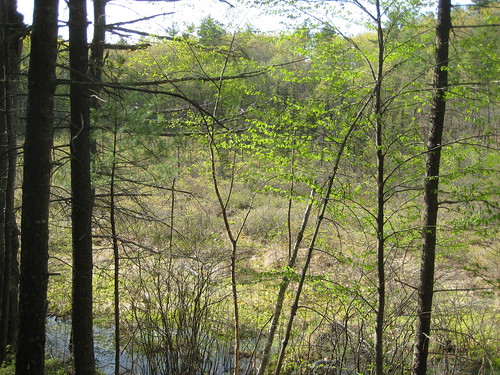
And a shot from the mat, back at where the picture above was taken:

On the mat, Sarracenia purpurea:
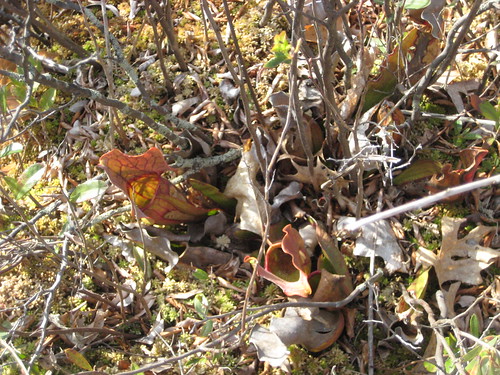
*
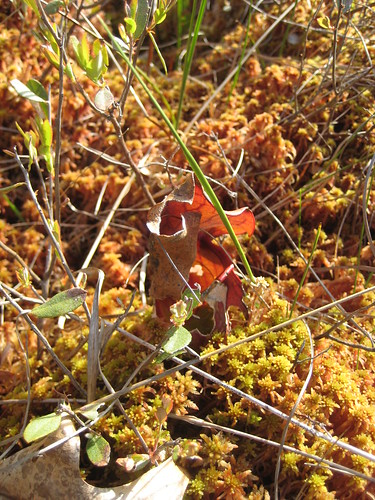
A flowering bog laurel (Kalmia polifolia):
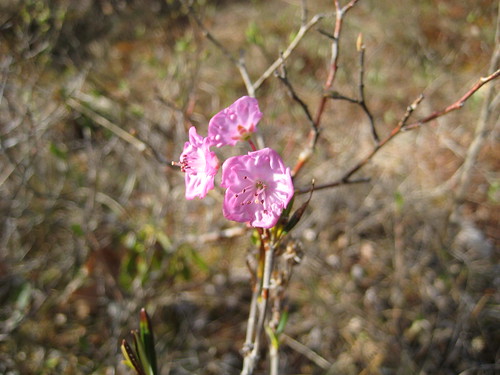
And an especially stunted spruce:
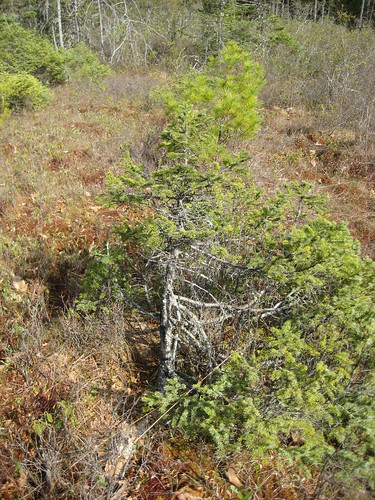
Expect a second post soon with video of the bog quaking (I hope) and audio of the water gurgling through the mat as yr humble correspondent stops and settles (again, I hope).
